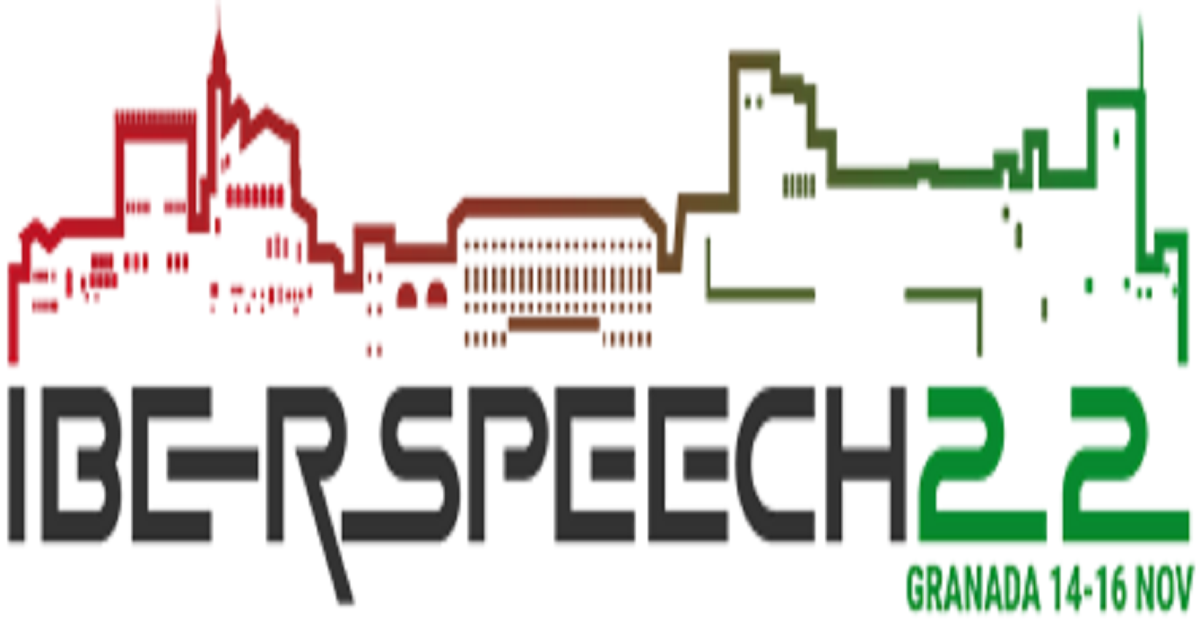IberSPEECH 2022: Speech and Language Technologies for Iberian Languages
A special issue of Applied Sciences (ISSN 2076-3417). This special issue belongs to the section "Acoustics and Vibrations".
Deadline for manuscript submissions: closed (23 June 2023) | Viewed by 21579

Special Issue Editors
Interests: speech processing; speech analysis and synthesis; voice production; expressive speech; Human-Computer Interaction; acoustic event detection; acoustic signal processing; machine listening; real-time noise monitoring; impact of noise events; real-life acoustic datasets; wireless acoustic sensor networks
Special Issues, Collections and Topics in MDPI journals
Interests: signal processing; speech processing; speech coding; robust multimedia signals transmission; silent speech processing/interfaces; join source-channel coding and applications; communication
Interests: dialogue systems; conversational systems; dialogue management; speech and language technologies; affective computing; emotion recognition
Special Issues, Collections and Topics in MDPI journals
Interests: multimodal interaction; natural user interaction; natural language processing; speech and language processing
Special Issues, Collections and Topics in MDPI journals
Special Issue Information
Dear Colleagues,
IberSPEECH 2022 will be held in Granada (Spain), from 14 to 16 November 2022. The IberSPEECH event—the sixth of its kind under this name—brings together the XII Jornadas en Tecnologías del Habla and the VIII Iberian SLTech Workshop events. The conference provides a platform for scientific and industrial discussion and exchange around Iberian languages, with the following main topics of interest:
- Speech technology and applications;
- Human speech production, perception, and communication;
- Natural language processing and applications;
- Speech, language, and multimodality;
- Resources, standardization, and evaluation.
The main goal of this Special Issue is to present the latest advances in research and novel applications of speech and language processing, paying special attention to those focused on Iberian languages. We invite researchers interested in these fields to contribute to this issue, which covers all fields of IberSPEECH 2022 http://iberspeech2022.ugr.es/call-for-papers. For those papers selected from the conference, the authors are asked to fulfill what is indicated in the instructions for “Preprints and Conference Papers” of this journal: https://www.mdpi.com/journal/applsci/instructions#preprints.
Prof. Dr. Francesc Alías
Dr. José Luis Pérez Córdoba
Dr. Zoraida Callejas Carrión
Dr. António Joaquim da Silva Teixeira
Guest Editors
Manuscript Submission Information
Manuscripts should be submitted online at www.mdpi.com by registering and logging in to this website. Once you are registered, click here to go to the submission form. Manuscripts can be submitted until the deadline. All submissions that pass pre-check are peer-reviewed. Accepted papers will be published continuously in the journal (as soon as accepted) and will be listed together on the special issue website. Research articles, review articles as well as short communications are invited. For planned papers, a title and short abstract (about 100 words) can be sent to the Editorial Office for announcement on this website.
Submitted manuscripts should not have been published previously, nor be under consideration for publication elsewhere (except conference proceedings papers). All manuscripts are thoroughly refereed through a single-blind peer-review process. A guide for authors and other relevant information for submission of manuscripts is available on the Instructions for Authors page. Applied Sciences is an international peer-reviewed open access semimonthly journal published by MDPI.
Please visit the Instructions for Authors page before submitting a manuscript. The Article Processing Charge (APC) for publication in this open access journal is 2400 CHF (Swiss Francs). Submitted papers should be well formatted and use good English. Authors may use MDPI's English editing service prior to publication or during author revisions.
Keywords
- speech technology and applications
- human speech production, perception, and communication
- natural language processing and applications
- speech, language, and multimodality
- resources, standardization, and evaluation
Benefits of Publishing in a Special Issue
- Ease of navigation: Grouping papers by topic helps scholars navigate broad scope journals more efficiently.
- Greater discoverability: Special Issues support the reach and impact of scientific research. Articles in Special Issues are more discoverable and cited more frequently.
- Expansion of research network: Special Issues facilitate connections among authors, fostering scientific collaborations.
- External promotion: Articles in Special Issues are often promoted through the journal's social media, increasing their visibility.
- e-Book format: Special Issues with more than 10 articles can be published as dedicated e-books, ensuring wide and rapid dissemination.
Further information on MDPI's Special Issue polices can be found here.








